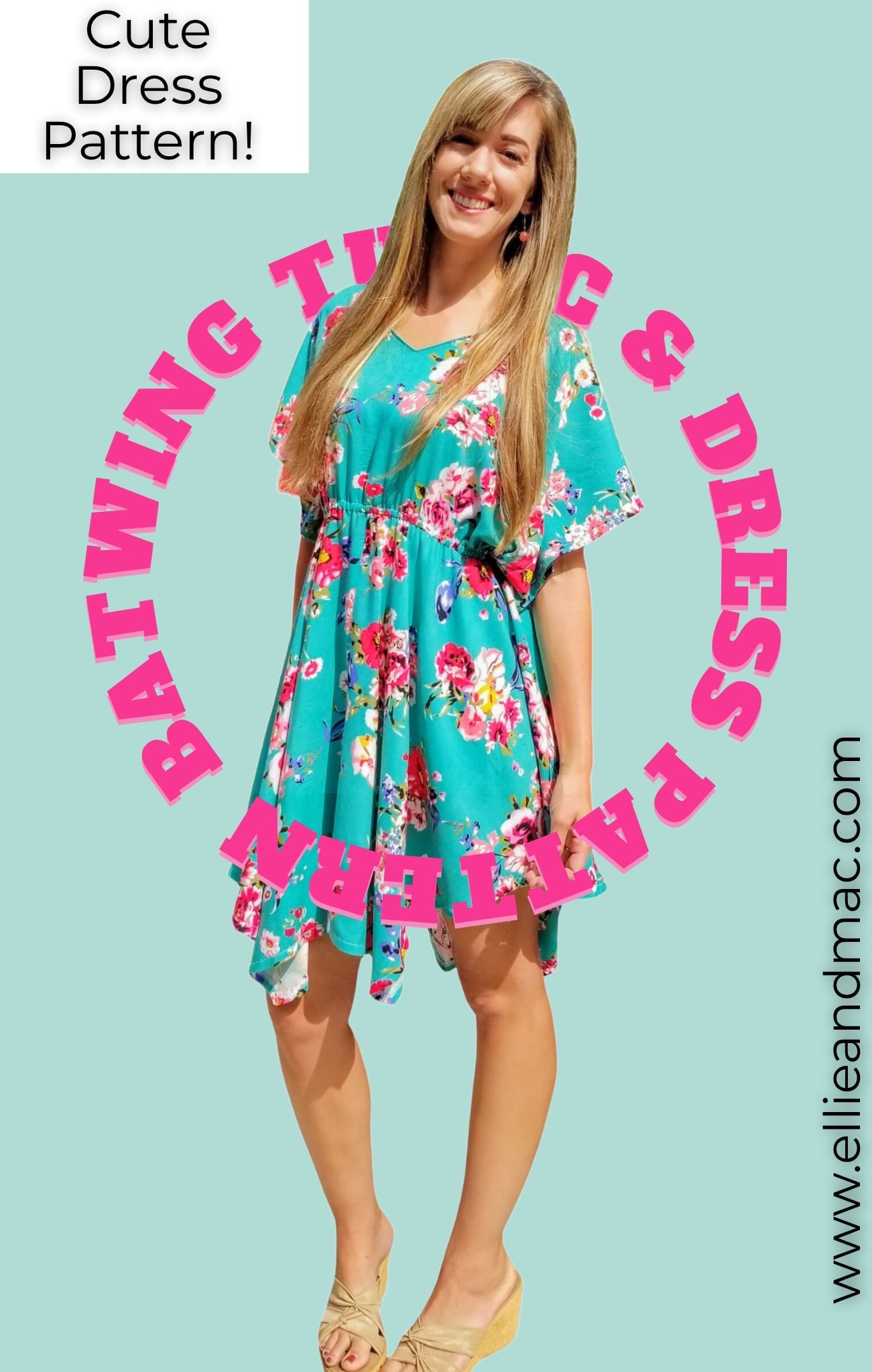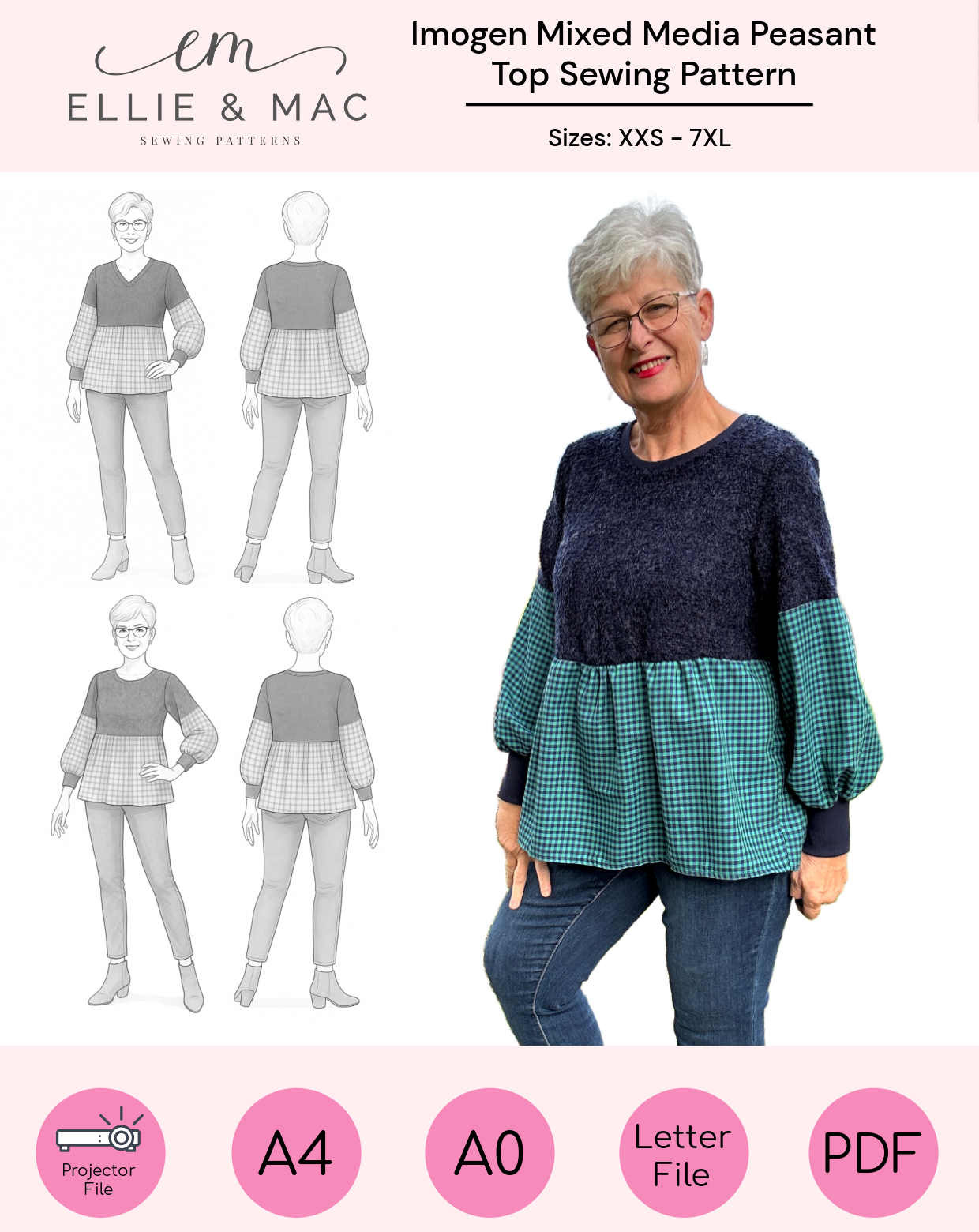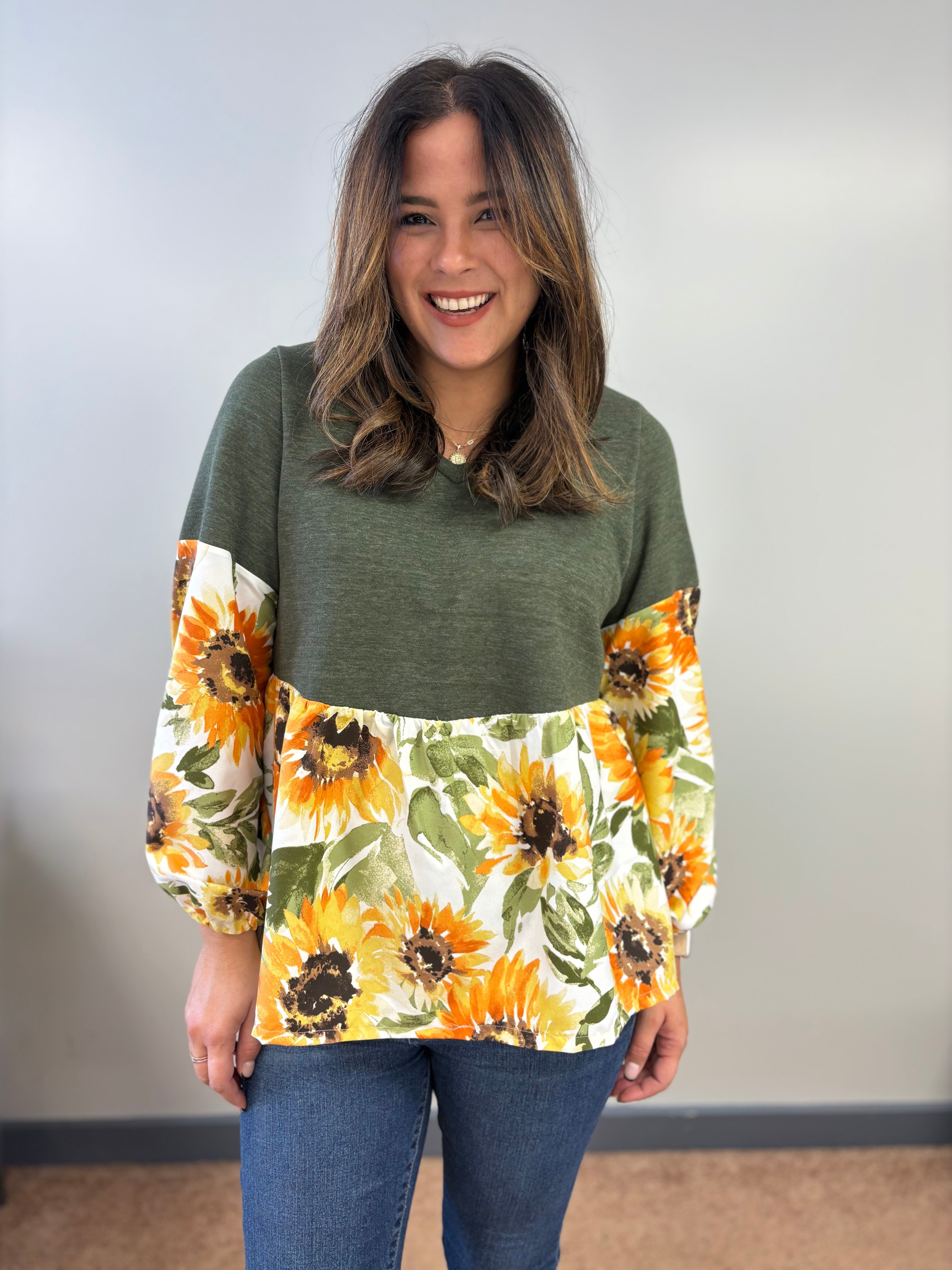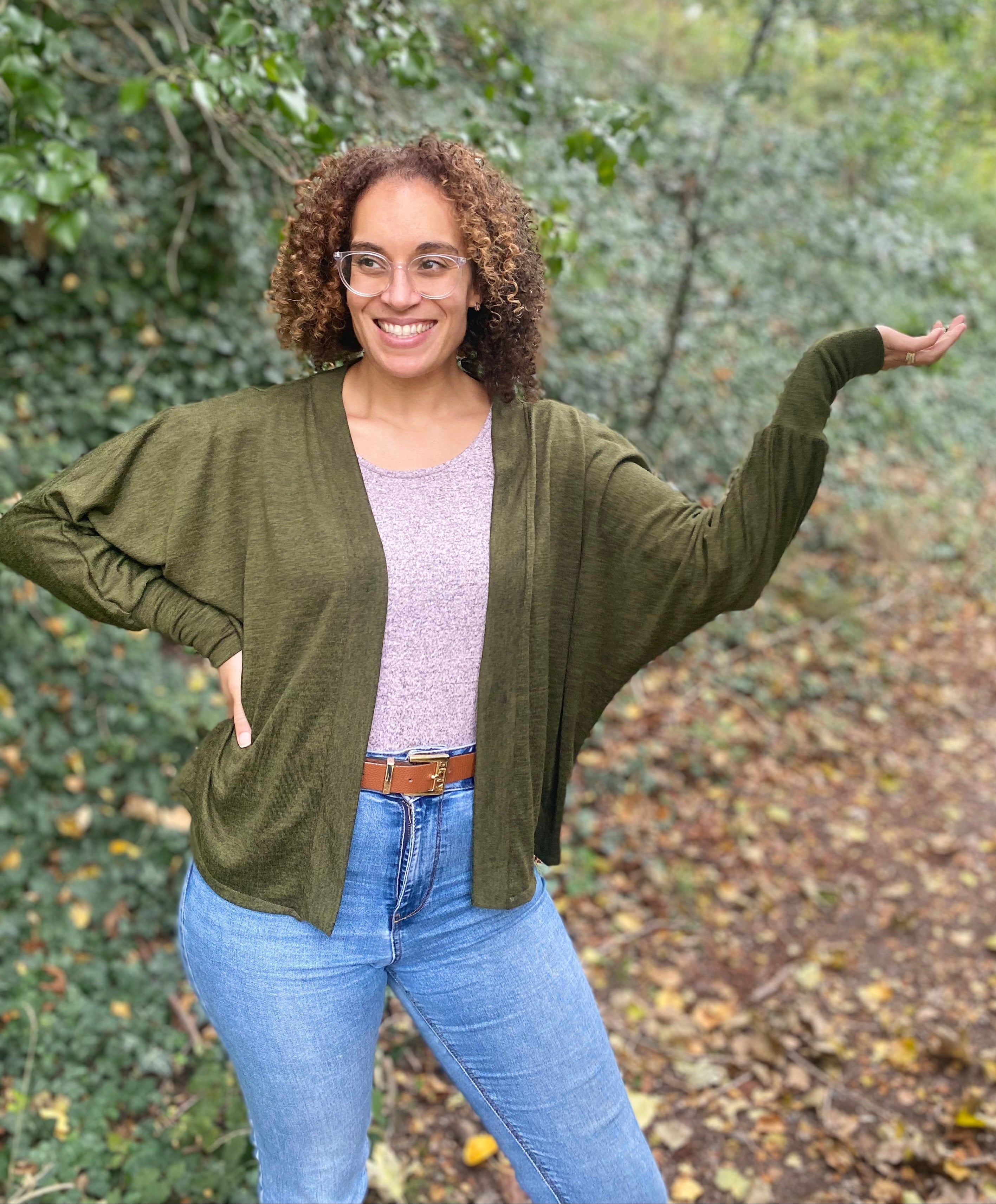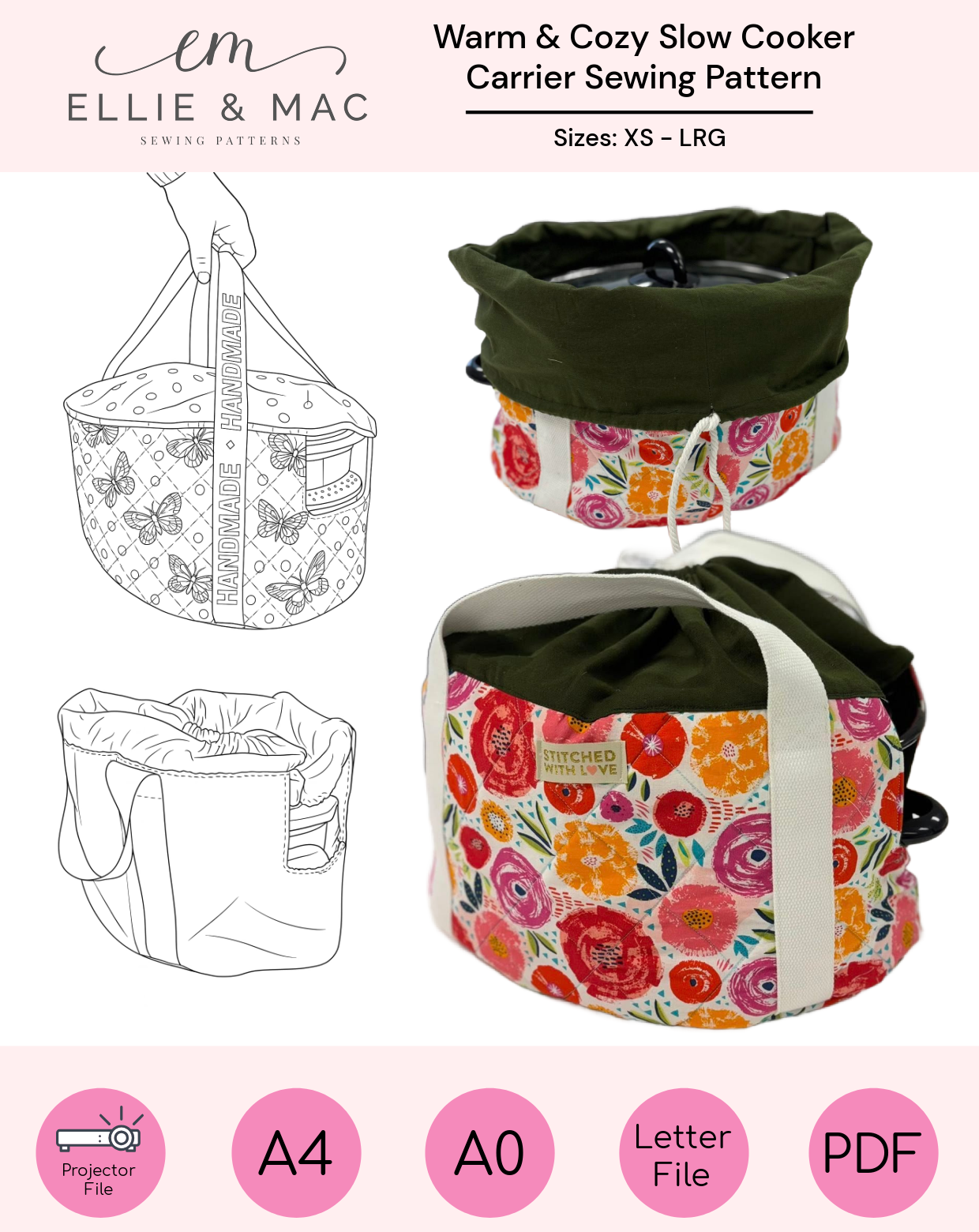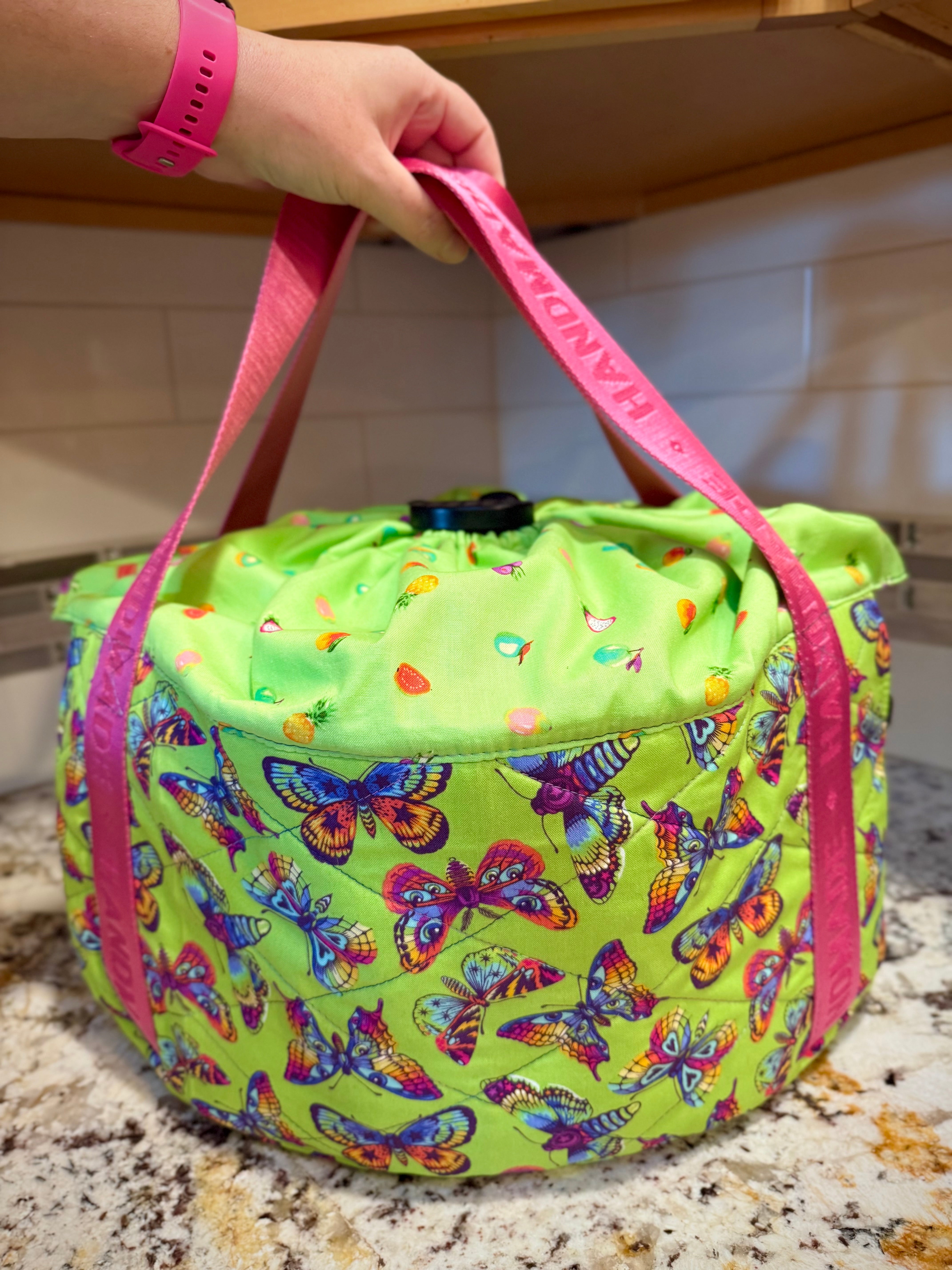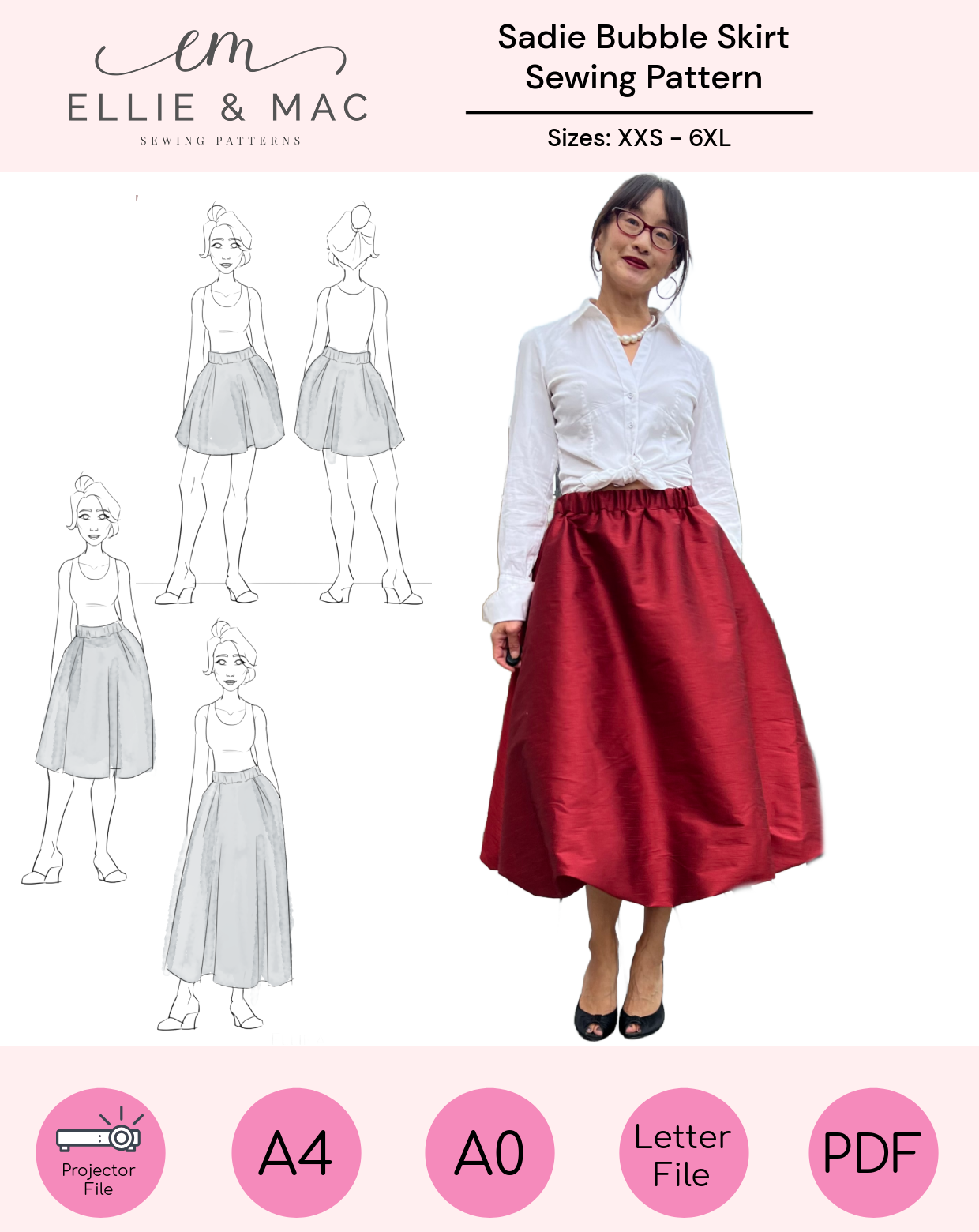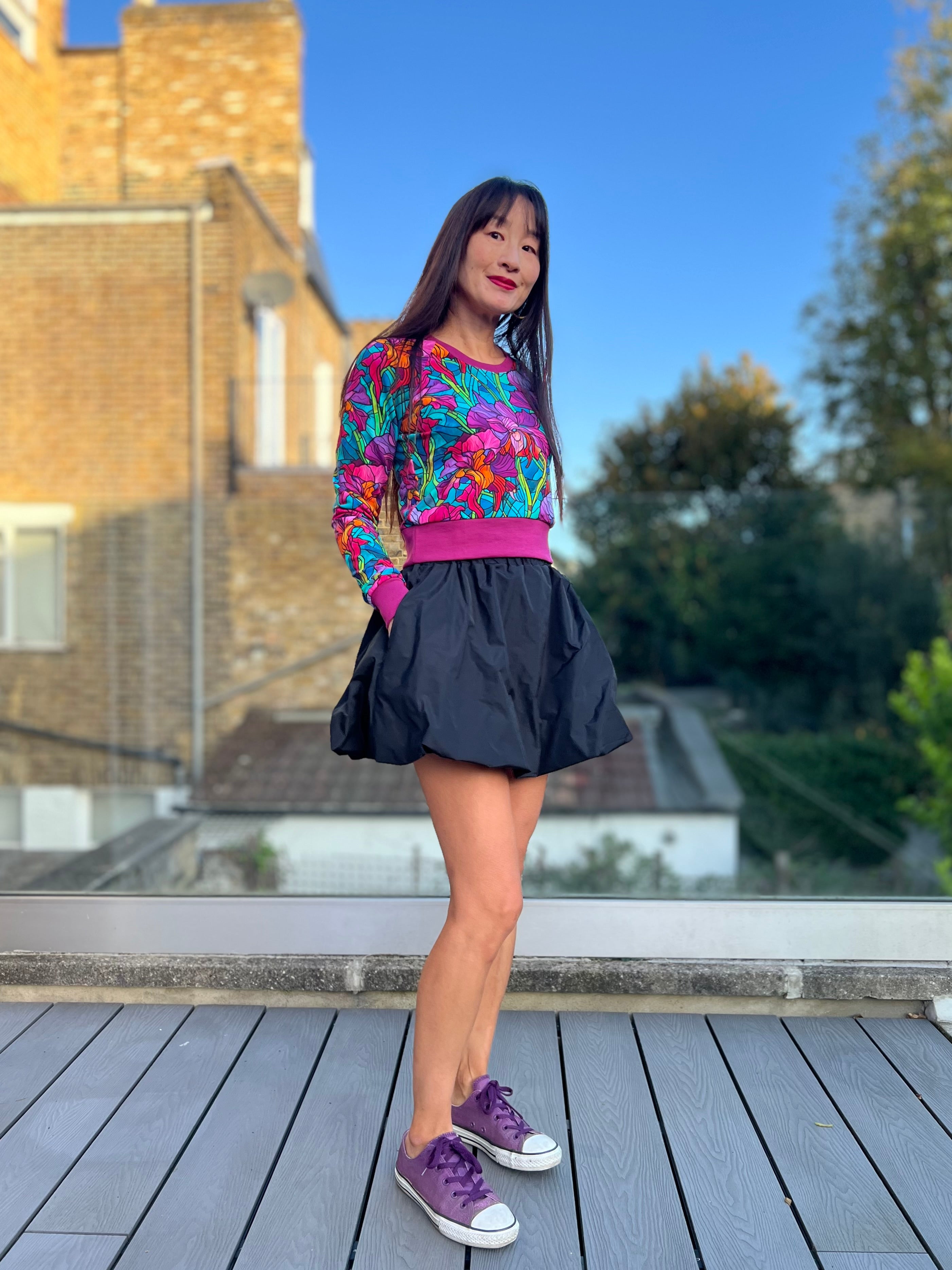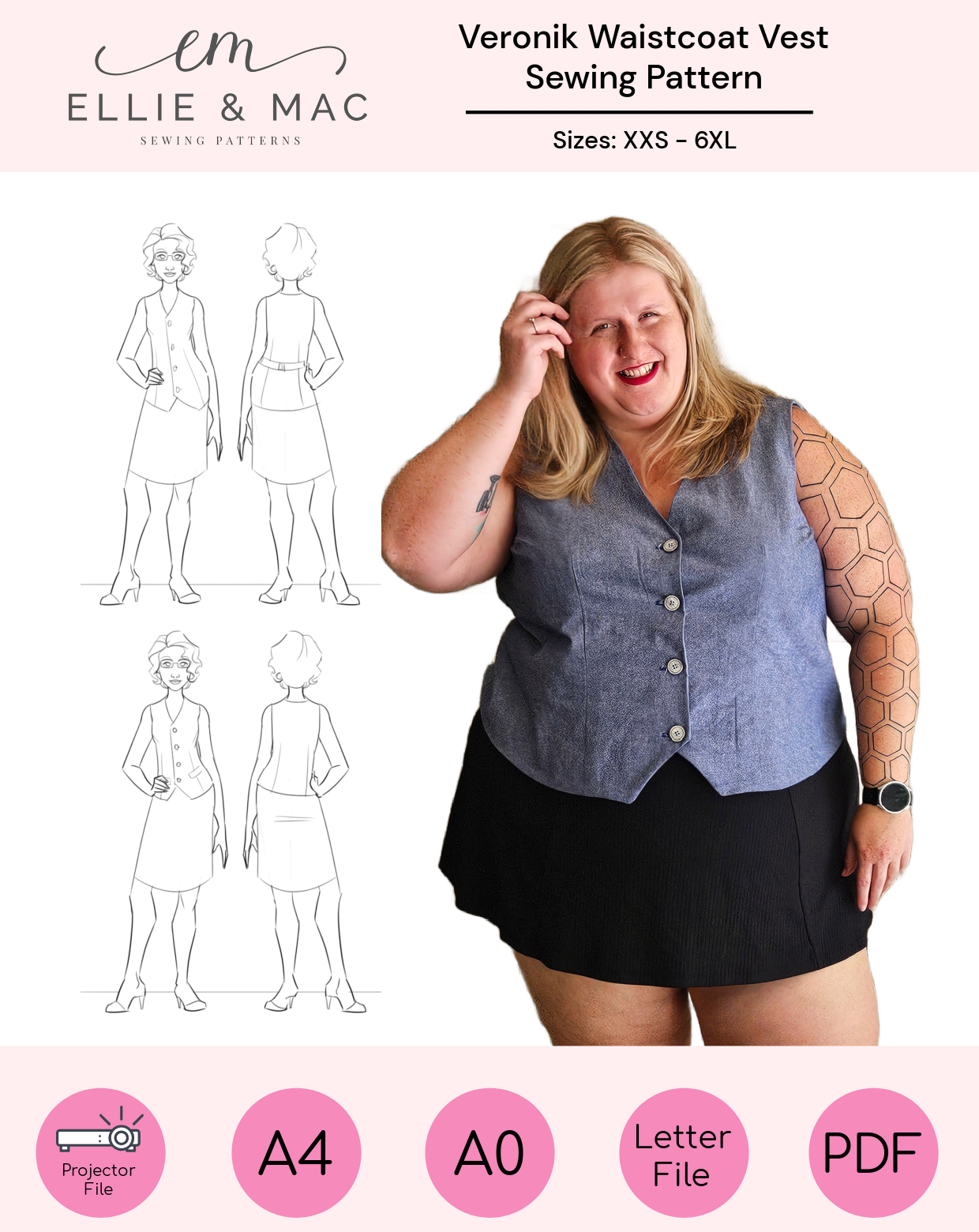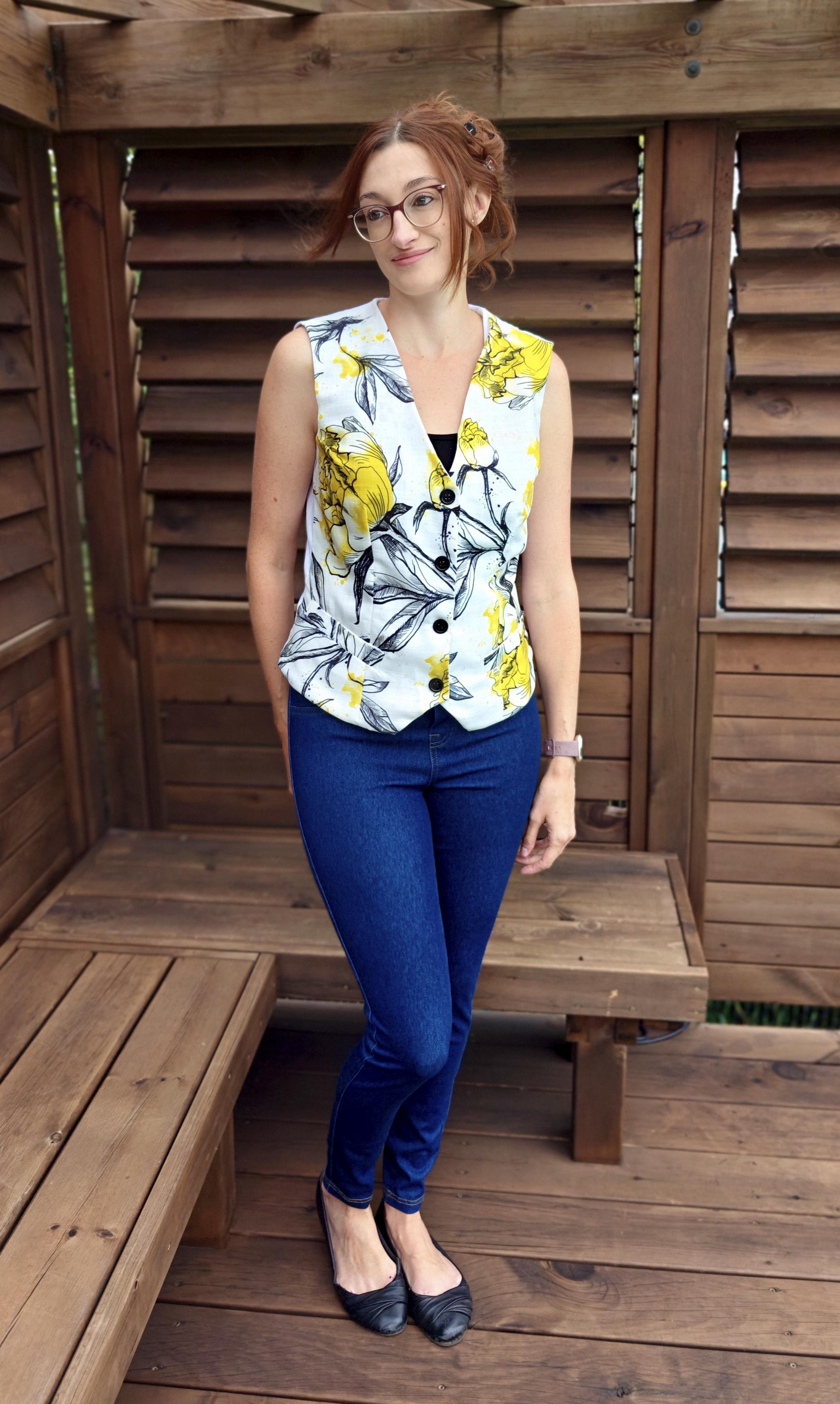Here’s how to alter your pattern to include a stripe or two, or three. Let's get creative.
Adjusting the sleeve pattern pieces:
1. Get your basic sleeve pattern (this would work with a set-in sleeve or a raglan) and trace it out onto whatever paper you want to use. I use large-scale tracing paper, but you could tape together some A4/printer paper if that’s what you have at home. Make sure to add any markings or information, as you normally would.

3. Decide how many stripes you would like and how wide you want them to be, or like me, eyeball it and hope for the best! This is where you can play with your ratios and colour choices.
4. Mark lines across your pattern piece where you would like each colour block to be. Don’t worry about seam allowances, we will sort that later. To make one the same as mine, start by marking 5.5 “ down from the sleeve point at each side and draw a line. This is going to be your contrasting shoulder piece. Then, measure out for your three contrasting narrow stripes. As you measure, draw yourself a new line across the pattern. For my sweater, the first line is 1.5” down from the bottom of the new shoulder line you just drew, the second, middle stripe, is 1” further down, and the third is 1.5”, but remember, this is YOUR sweater and you can make it work however you like. Just want two stripes? Then that’s fine. Want them wider? Hey, go for it!

5. Now, label those pieces so there is no confusion. They need to be kept in order or you will have a wonky sleeve. A is the new shoulder piece, B to D are the stripes in order and E is now the bottom part of your sleeve. Also mark on your pattern to remember to cut two of each piece, and make sure they are mirrored just like cutting a normal sleeve. I also added on the sleeve hemming options onto the bottom piece as I forgot earlier!

6. Now, here's where you can take one of two options in regards to seam allowance. I am all for an easy option, so I make a note on all the pattern pieces where I need to add seam allowance when it comes to finally cutting out the fabric. In this case, it would be the bottom of the shoulder piece A, both top and bottom of pieces B to D (the stripes), and just the top of piece E. The other option is to cut out all your paper pattern pieces at this point (they are minus seam allowances), trace them individually on new paper, and include the necessary seam allowance as described above when drawing them out. This option is handy if you think you may forget when cutting fabric.
7. Once you have all your new pieces, go pick pretty fabrics! All mine came from Poppy Bear Fabrics (UK based) and for this sweater I used 100% Cotton Waffle. You could use French Terry, Jersey, Sweater Knit, the options are endless.
Cutting out
1. Be as neat and accurate as possible when cutting or you may end up with wonky stripes, and no one wants that.
2. Also, don’t forget to add that seam allowance if you went for the easier option (look who forgot on piece A below, whoops). So, I added a little to the bottom of the sleeve on piece E.
3. Make sure you add all notches and marks, as normal.



Sewing the sleeve together:
1. Start with piece A (the shoulder) and B (your first stripe), flip B up onto A so they are Right Sides together, and the bottom of A is lined up with the top of B. Sew as you would for the type of fabric you are using and machine you have. Press the seam allowance down towards piece B.


2. Work your way down the stripes, following the same method as above. Its now piece C flipped up onto piece B, Right Sides Together with the bottom of B lined up with the top of C. Sew and then press the seam allowance.


3. Keep going for however many stripes you wish to add and then eventually with the bottom piece. In this case, that would be the top of piece E sewn Right Sides Together onto the bottom of piece D.


4. Optional, topstitch all the seams after a good press.
5. Don’t worry if the sides of your completed sleeve are a little wonky now, just go ahead and trim the sides down to make them nice and neat.


6. That’s it, now repeat for the second sleeve, and sew the rest of the sweater ,as per the instructions.
7. When sewing the long edges of the sleeves together, it may be worth basting along the stripe area or pinning the heck out of it to ensure as neat as possible seam/stripe matching. I find that nestling the seams (one going up and one going down) helps massively. But hey, don’t panic if its not, no one should be looking that closely under your arms!
Wear that sweater out with pride!



Fancy adding stripes elsewhere or in other directions, its totally doable, heres another one I made earlier, oh and it gets addictive…..

Written by Emma Cockerline-Smith.


